This is part of a larger project, called Ten Steps, in which I am documenting different terrain in video. This one is from a visit to a historic site (Fort #4) in New Hampshire. Watch the others here.
Peace (walking the line),
Kevin
This is part of a larger project, called Ten Steps, in which I am documenting different terrain in video. This one is from a visit to a historic site (Fort #4) in New Hampshire. Watch the others here.
Peace (walking the line),
Kevin
I had been revisiting a crowd-sourced resource of technology tools and platforms recently, and noticed that many of the sites were dead and gone. So I invited a few friends in CLMOOC and beyond to help update the list. We curated it with general themes to help give some semblance of order to it. We hope it’s helpful.
Peace (and explorations),
Kevin
I was trying to have some fun with another longer poem, where part of the prompt with National Writing Project friends brought to mind those poetry and art vending machines you see around (I saw one outside a museum recently).
I wanted to try to create a digital machine for the stanzas in the poem. I had some other grander ideas that I could not seem to pull off, so I resorted to Google Slides (there is a short audio welcome but you may need to click the exclamation point to hear it).
Link to the Word Machine poem (if embed is too small)
Peace (and art)<
Kevin
This poem is part of a series of summer writing I am doing with an intention on revision and length of poem with other National Writing Project friends. The prompt was to notice the world, while on a walk or hike outside.
Walking The Trail, Noticing
It’s in the pause of walk and mind
that you take the time to notice
the way flowers bend to wind,
a dance to a song with grace –
you settle in, slow down, listening
becomes an act of gratitudeAn aged wall beckons,
stone surface all moss and lichen
and rugged, a reminder of those
who long ago forged out farms here,
divided these lands with rocks
pulled up from this dirt,
a straddle between time and place,
and the original people here
even before themA leaf free-falls, green with red fringe
and orange veins mapped at the center,
a floater from a branch above,
and you love the motion of it,
the tumbling – the turning, and how
gently it joins its brethren on ground,
resting for its next act as nutrient
to nourish the soilFurther on, the river bends, then breaks
beneath a small concrete bridge –
you duck to follow the flow of water
into the dark, cooler air, unsettled,
the shadowed curves of smooth walls
knitted with graffiti hearts and chalk marks,
the stone pathway slippery under footYou are boot-jumping roots now,
in through the wetlands of woodlands,
mosquitoes whispering in your ears,
the pungent stretch where thick muck
grabs and holds you, and this green,
an illusion of stability, of , of solidity, of steady,
but it’s not, and never will be,
of here where the tricksters awaitThen, just beyond the trail, trees open up
arms wide at the edge of noticing,:
bright summer light suddenly spilling in,
a liminal space between this wild,
and not, transforming into transitory,
made complete by an engine motoring by,
the quiet of the woods left behind
for another day
Peace (walking it),
Kevin
This is part of a larger project, called Ten Steps, in which I am documenting different terrain in video. Watch the others here.
Peace (walk it through),
Kevin

I grew up in a text-heavy world and I had a job as a newspaper journalist in a writing-heavy field of work, but even then, changes in how text – words, prose, etc. — was being used by writers and readers alike was afoot. I remember when the national newspaper, USA Today, became an experiment (criticized and at times mocked in the newspaper industry, at first, as being a blow to literacy) of how to prioritize visuals before text, with its use of flashy charts, diagrams, photos, and other visual media. That criticism collapsed as USA Today turned a profit while many traditional newspaper lost a bundle, or closed up shop completely. My old newspaper is a shadow of its old self.
I remain an avid writer, working mostly with words, just about every single day.
Yet I have long been fascinated by how we can expand the notions of “composition” to push ourselves, and our students, to consider what’s beyond the idea of just text (as important as the written word is, and always will be, in my own mind) to include other forms of media. A book I had helped edit years ago — Teaching The New Writing — was an attempt to explore what composition looked like in classrooms where technology was becoming part of the learning experience.
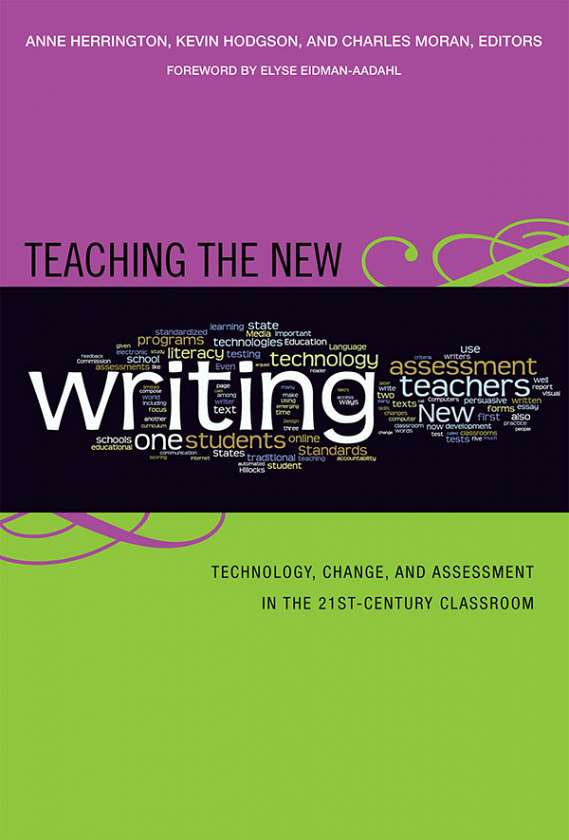
It would be nice to say we have found a balance, where text/words and media/technology mingle in tandem for deeper meaning. However, in working with young writers, it does seem that words have lost much of its primacy in favor of image, video, gif, etc. There may be many reasons for this — attention spans, screen devices, brain development, etc. The Pandemic sure has thrown things for a loop.
I’m not naive in thinking that the way I learned to communicate with words and writing and text will always remain the way that my students will learn, so I have long balanced helping them develop the art of writing (stories, essays, etc.) with the art of creating media (image, video, audio, games, etc.) to show how one form can partner with the other.
This blog reflection stems from some thoughtful comments left in a post the other day where I shared a mostly wordless video (my Ten Steps walking video project) and from two posts (here and here) that Terry Elliott shared over at his blog, where he indicates his own explorations of ‘text’ as an idea. The graphic above (Text is Gravity) is a remix of the first lines of a poem of his.
In a bit of unanticipated convergence, I visited and explored a text-based Virtual Reality exhibit from Laurie Anderson that was, in fact, centered on text — stories, letters, and more — inside an explorable space surrounded by word and letter. It reinforced the notion, to me, of how text itself remains a constant in how we navigate and understand and experience the world, no matter the technology. Of course, Anderson follows her own vision, and not all VR is likely to be centered on text as her work here is.
I hope we don’t reduce our world of communication to only the visual, and I don’t suspect that will happen. But trend lines for short videos (TikTok, etc) and visuals (Snapchat, etc) in the younger generation — coupled with a decrease in overall book and longer text reading — is something that all of us, educators and parents and others, need to keep an eye on, and maybe work harder to demonstrate the power of words, as a means of thinking and reflection as much as for communication.
Peace (writing it loud),
Kevin

(image via https://massmoca.org/event/laurie-anderson/)
It was a hot, humid day here in New England, so we took our teenage son to the MassMOCA museum — a huge, cavernous modern art extravaganza created out of an old manufacturing complex. It’s cool in there, in both degrees and art. We hadn’t made reservations in advance — it was more a hit-the-road on a whim kind of day — and we took a chance to see if there was any room for us to explore the Laurie Anderson Virtual Reality exhibit entitled “Chalkroom”
No luck, the attendant informed us, as the day was booked solid in advance. Dang. We knew our son would enjoy a VR experience. We wandered away, slowly, but a few minutes later, we heard the attendant calling us back. ‘Come on,’ he informed us, with a smile, and a secretive wave, ‘I’ll let you in,’ and he led us into a completely dark room with virtual reality stations set up.
If you know anything about Laurie Anderson – musician, visual artist, writer — you know she is full of interesting experimentation. The Chalkroom VR takes that to another level altogether, fusing technology with immersive text. The Chalkroom is based on a live exhibit she created years ago for the Guggenheim in New York, in which she converted rooms with etched writings in chalk. In this VR version, the visitor in immersive goggles flies and wanders through a fascinating landscape of virtual writing and art. It’s difficult to describe. Anderson created the experience with collaborator Hsin-Chien Huang.
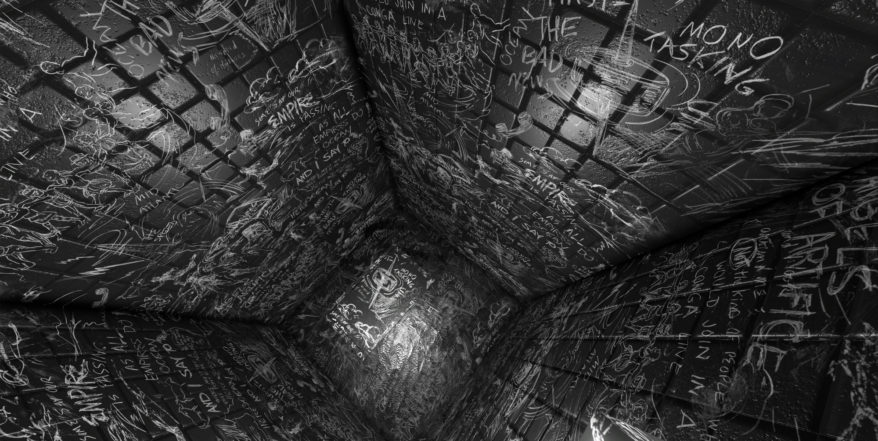
(image via https://massmoca.org/event/laurie-anderson/)
In one room called Cloud, my favorite, you use the VR set to pull words off the walls and create a swirling cloud of letters and words, so that you end up standing in a maelstrom of texts set in motion. In another called Tree, my other favorite, you come upon a tree, whose leaves are letters and words, and you can either fly up through the branches, causing letters to fall and float, or once at the top, channel down along the trunk of the tree. In another called Rain, you are standing above a puddle of water, as rain in the form of text, comes falling around you. In another, called Writing, you shine a line on the walls, and write your own texts, scribbling lines that are made out of other words, so that her writing becomes your ink, but only temporarily, as you then watch your graffiti lift off the walls, float off and disappear.
Laurie Anderson’s voice, meanwhile, is whispering in your ear the whole time, providing snippets of story and text, a gentle hum of the artist perched on your shoulder even as you are invited to make your own choices about what room to explore and what to do once you get there.
I am often a skeptic to the emergence of Virtual Reality as the next step for creative composition — the whole Meta World thing bothers me because I know how companies are already gearing to exploit the experience for financial gain — but Anderson’s work has opened my eyes a bit wider for other possibilities, for the way that Anderson and Huang so effectively merges text and story and technology and sound together into a fascinating experience within her imagined world.
I love that text itself is key component, too, (white chalk writings set against a dark background) as she uses letters and words and phrases to chalk the walls and floors and ceilings, and then invites the viewer to explore those terrains, which sometimes open up into wider narratives and compositions in the virtual world. It’s also worth noting the tension between the old school writing (chalk boards) and the new (virtual reality), as Anderson bridges the past with the present/future.
Peace (writing it on the walls),
Kevin

Flash flickr photo by uphillblok shared under a Creative Commons (BY-SA) license
I saw a call for a piece of Flash Fiction from NCTE (stories had to be exactly 150 words) and so, earlier in the Spring, I worked on a short piece, and I asked some National Writing Project friends to read and workshop it with me, and I ended up with this:
She scanned the room of students with the trained eye of a veteran thirsty for truth. The suspect hid behind a mask. There might have been some clandestine whispering. It was hard to tell anymore with mouths hidden under a veil of protection. Only their eyes showed, and most were brimming with comments they would keep to themselves, for now. Still, she had encountered obstacles in other inquiries before and she was nothing if not tenacious. One didn’t remain in this position for many years without a sense of patience and purpose. A sneeze erupted from the back of the room. Her gaze snapped to attention. A boy removed his mask to wipe his nose – now she definitely heard whispers: “Ewww! That’s so gross!” – and there, on his lips, were the tell-tale aquamarine trails of the stolen Cool Blue Gatorade. “You!” she shouted. “In the hall. Now. And bring Kleenex!”
Here is the call by NCTE, and then the teacher/writer Padlet (not too many contributors) but the student Padlet has a good collection of flash fiction stories.
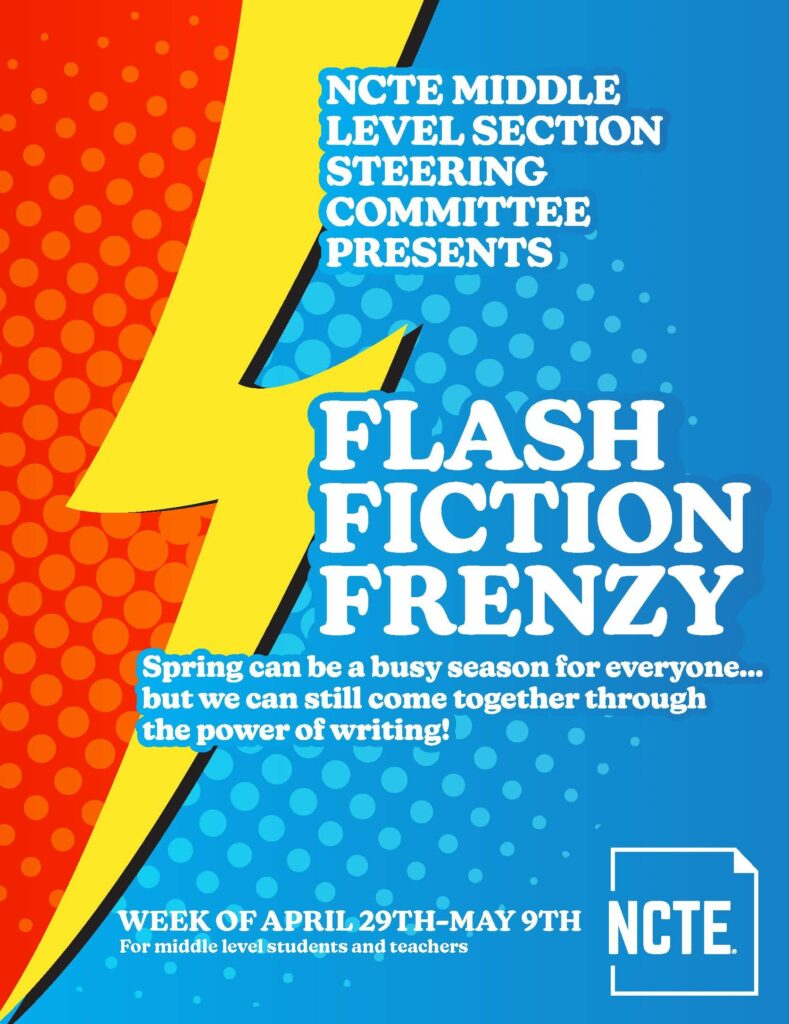
Peace (shortened for length),
Kevin
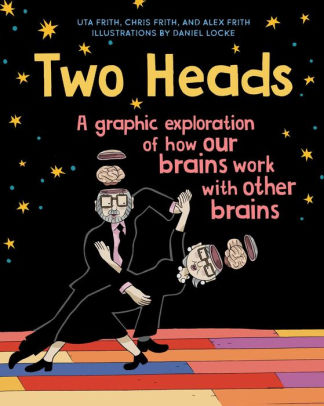
Although not in an all similar in content or style, Two Heads (A Graphic Exploration Of How Our Brains Work With Other Brains) reminded me a bit of Nick Sousanis’ Unflattening for the way in which deep and difficult concepts are rendered more clear for a reader through the mix of text and graphic art.
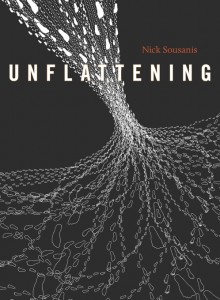
Two Heads — written by Alex Frith with art by Daniel Locke, with ideas from Uta Frith and Chris Frith — explores the science of the brain itself, and the complex and intriguing ways that our brains work or don’t work, particularly in social situations, with other people in the mix. The graphics and the writing here are fun and engaging, even as the explanations are rather necessarily dense and complicated, as the book dives into focused neuroscience concepts.
This book, like Sousanis’ book (which was his graduate thesis), is a definitely a scientific exploration, complete with references and citations to more than 300 studies and papers, and it never skimps on the science of the brain, whether the book (through the characters of Uta and Chris Frith, both esteemed figures in the worlds of brain science and psychology) is exploring autism, instinct, empathy, cooperation or free will.
Their main shared focus, as indicated by the subtitle, is how people’s brains work differently and more efficiently, and more creatively, when they are cooperating and collaborating with others (with some exceptions) and how the brain itself functions and adapts in different situation, and what it might mean for us all. I’ll be thinking about the book’s concepts for some time to come.
What makes the book so readable is the playfulness of the writing (by Uta and Chris’ son, established author Alex Frith) and the artwork over hundreds of pages by Daniel Locke. Locke turns brain concepts into visual art in so many inventive ways, and Alex Frith brings his parents to life on the pages with great compassion, making the husband-wife team not only understandable but lovable, too.
If only more academic textbooks were rendered in the format of graphic art …
Peace (thinking on it, deeply, with others),
Kevin